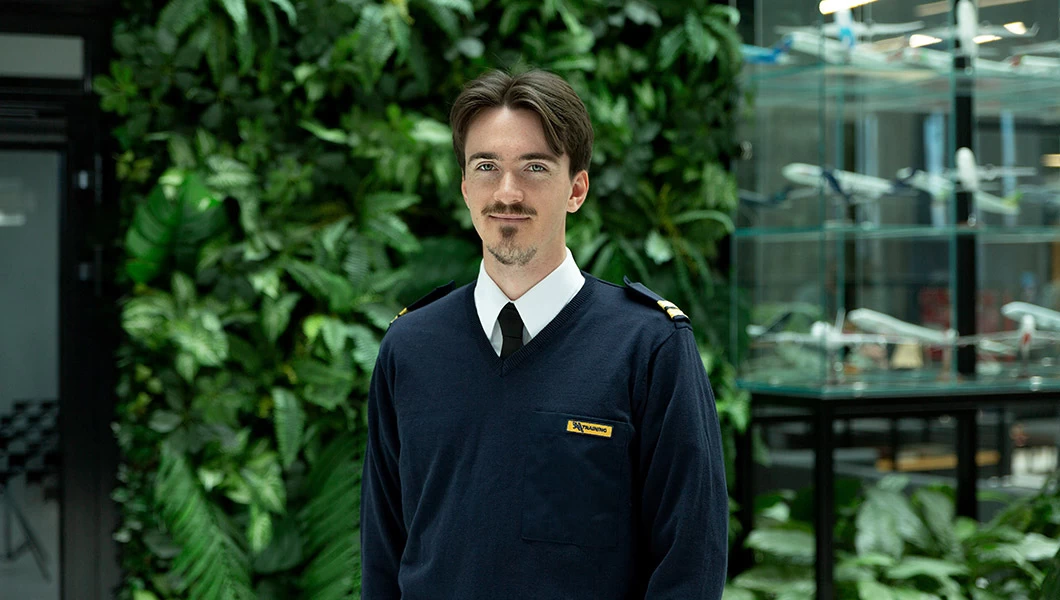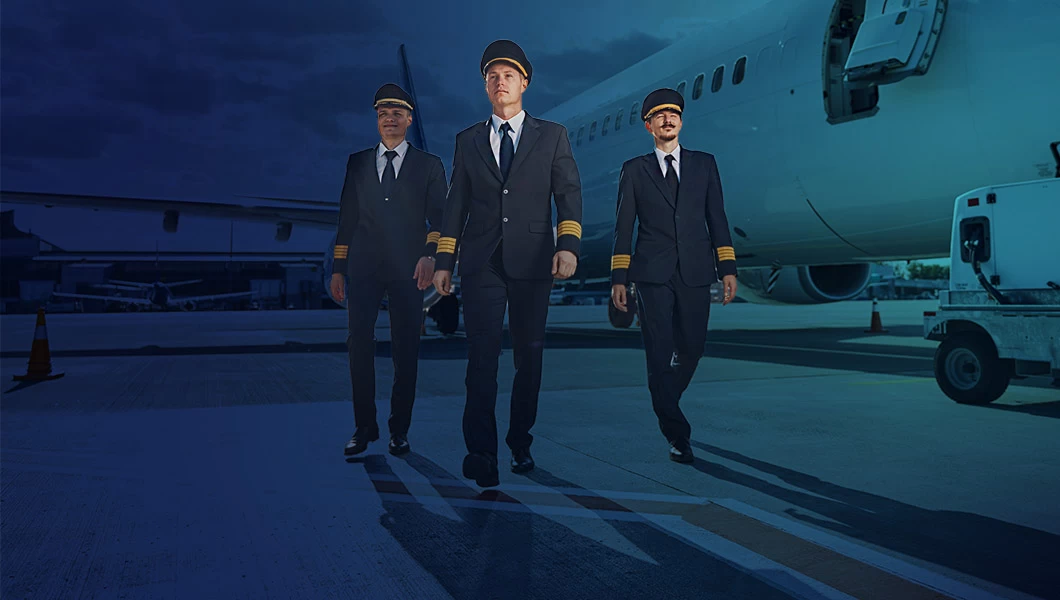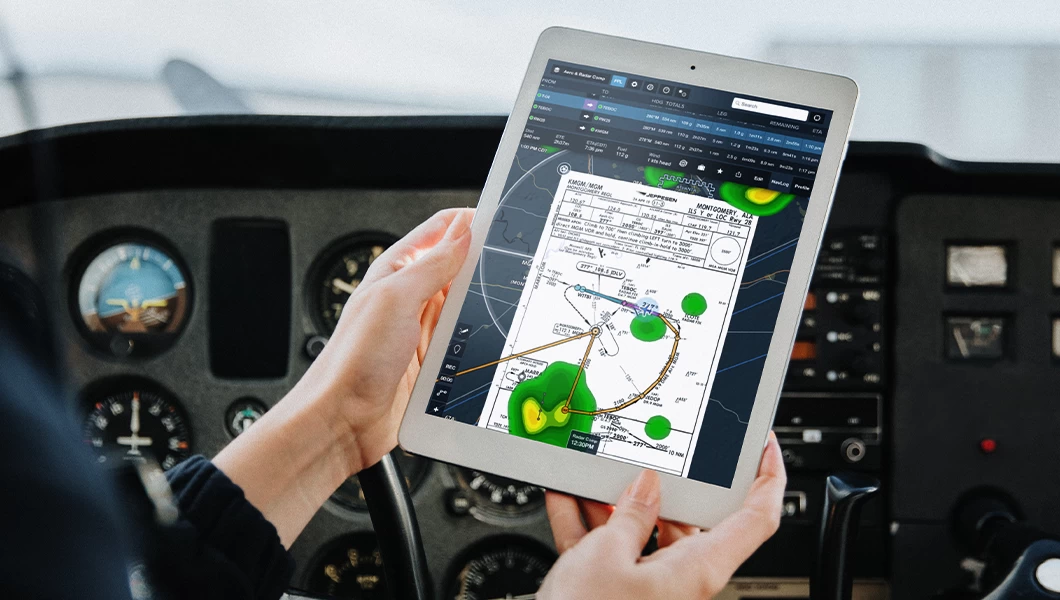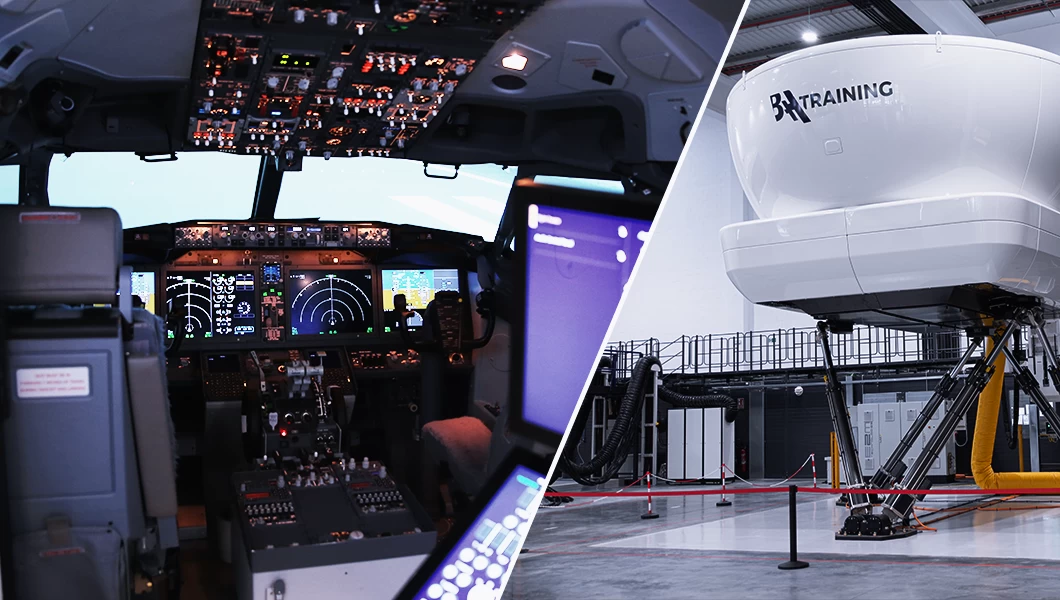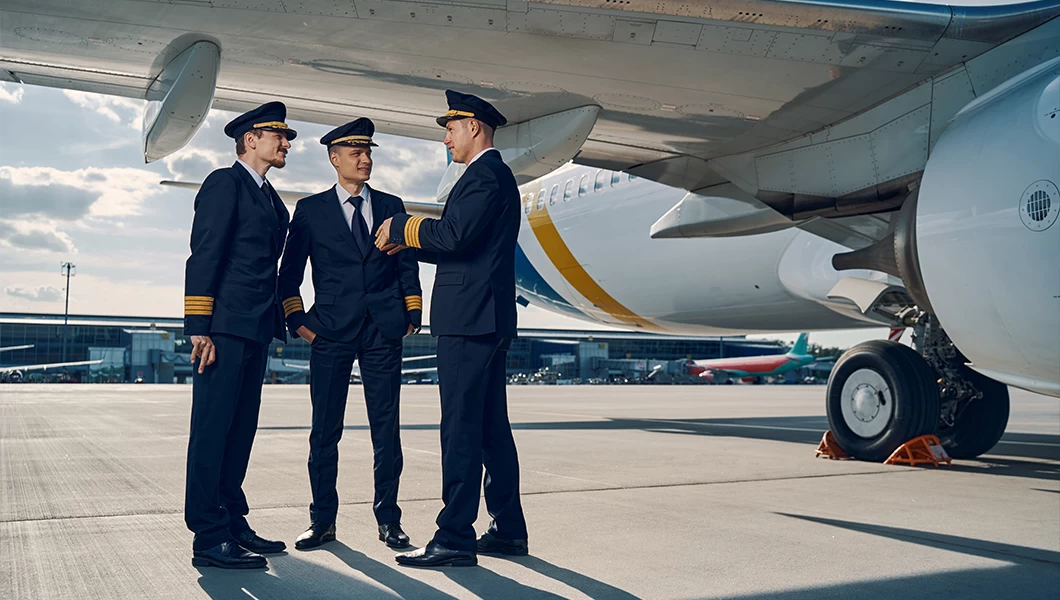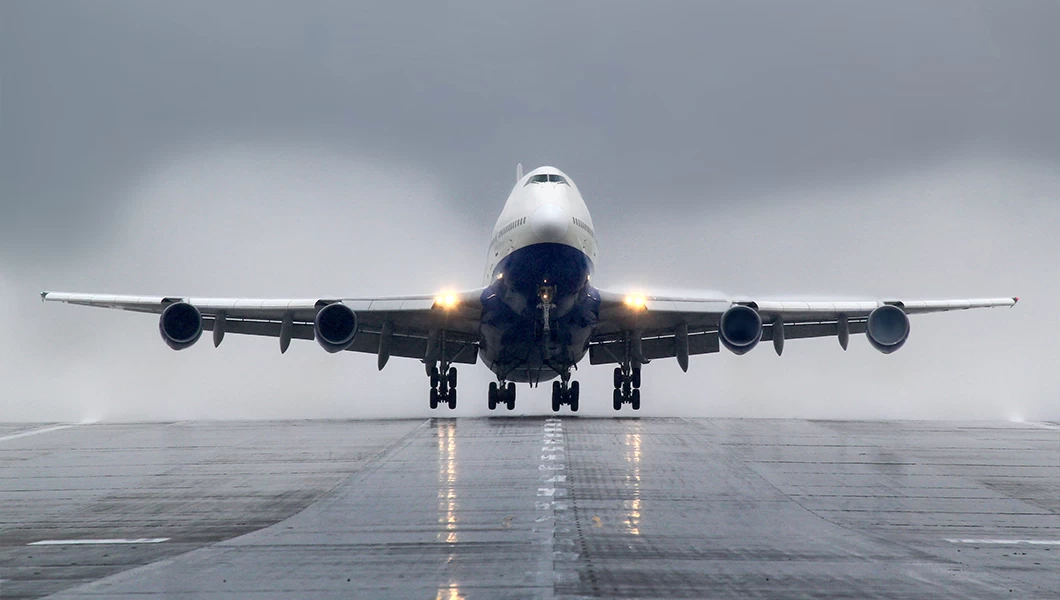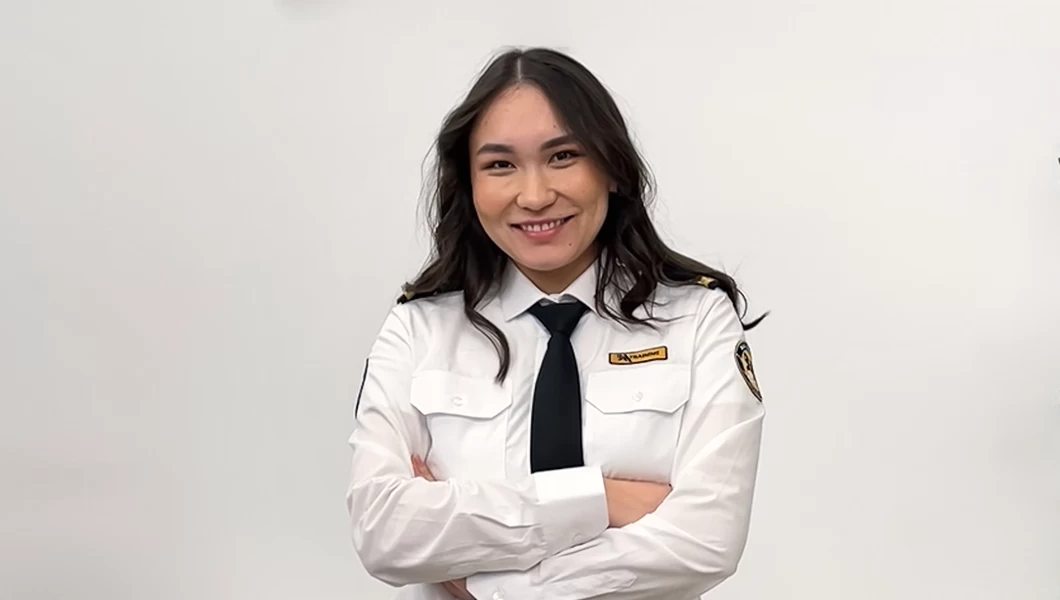1. Fly your preferred aircraft within the license limits
As an EASA PPL holder, you can fly a single-engine piston aircraft up to 5700kgs MTOW that does not require a Type Rating. For example, you can fly the extremely user-friendly Cessna 172 Skyhawk, commonly available for rent and purchase, or the Piper PA-28 Cherokee, appreciated for its robust construction and durability, among many others.
Not only does this type of air travel give you the incomparable feeling of freedom and motivate you to learn a new skill, but it also saves you a lot of your precious time (approximately twice as much as you would spend on the road)!
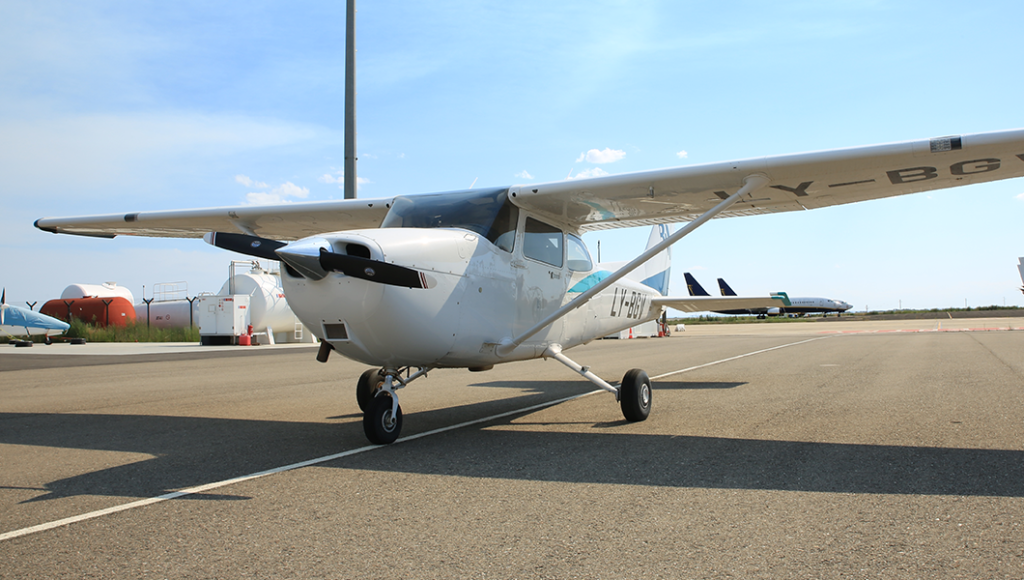
2. Carry passengers and share flight expenses
Naturally, the idea of flying an airplane might make you scratch your head, as this occupation is not the cheapest one. However, the good news is that, in line with EASA regulations, you can share direct flight costs with passengers. The opportunity can be seized using non-complex aircraft and carrying a maximum of five persons (six people on board, counting the pilot).
Joris Gintilas, Chief Compliance Officer at BAA Training, says, “Students often ask whether it’s legitimate to share costs with passengers. The answer is 100% yes, as both EASA and FAA gave the green light to this alternative a while ago. National aviation authorities might limit the endeavor to a certain extent, but in Lithuania, for instance, there’re no such limitations.”
2.1. Example of aircraft rental cost-sharing
Also, remember that only fuel, aircraft rental fees, airfield charges, landing fees, and similar expenses can be shared. It does not apply to ‘annual’ maintenance and operating expenses. Nevertheless, that’s already quite some relief. Check the estimation example below to understand your saving potential better.
Suppose you are a pilot carrying three other people in a four-seat airplane. You receive a rent invoice which shows the flight took 3 hours of engine time at €200/h (the average price in Lithuania). Then, you would calculate the rent cost as 3x€200=€600. If you agree to spread the costs equally with your passengers, your expense is just €600/4=€150.
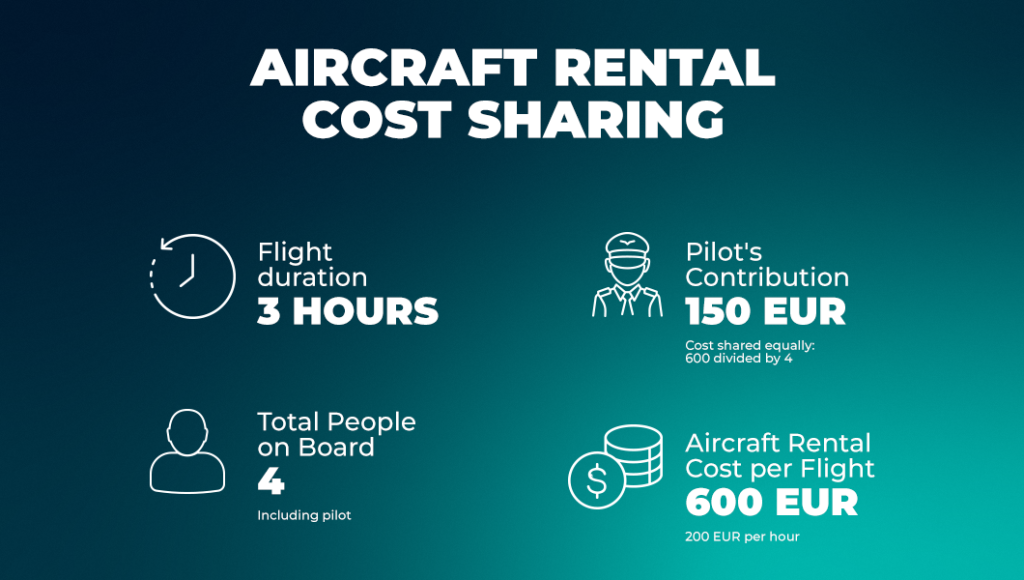
2.2. Look for companions on flight-sharing platforms
Now that you are familiar with the cost-sharing option, a question arises about where to look for those who would be willing to take the remaining seats. The second logical question is if it is safe to fly with them, considering they are total strangers. The answers could be found by browsing through various flight-sharing platforms, such as COAVMI, Wingly, Flyt.club, and Vuelea. These platforms aim to match private pilots with those who want to take a flight. So, every private pilot can go online and try to find some companions!
EASA issued a unique charter a decade ago listing the commitments imposed on flight-sharing platforms. For instance, they must raise awareness about a pilot’s code of conduct, provide guidance and tutorials on safety-related best practices, etc. All of the flight-sharing platforms mentioned above signed this charter.
3. Be an active pilot community member
We cannot emphasize enough the importance of belonging to an aviation community after completing your training. First and foremost, it opens up great opportunities for networking with like-minded individuals, and you never know what wonders these connections can lead you to in the long run!
Let us share a real-life example of one of the youngest Boeing 737 Captains, Lithuanian Igoris Lobanovas. He achieved the rank of Boeing Captain at the age of just 24!
In his interview for the local podcast “Alex Show,” he admitted that his journey wasn’t initially smooth. He dropped out of university, and his passion for aviation led him to work as a mechanic’s assistant in an aeroclub. According to him, after he did his PPL flying lessons and obtained his private pilot certificate, the support he received from fellow community members, both mentally and in overcoming financial constraints, propelled him quickly up the career ladder. He told the interviewer, ‘I don’t know a single person who would not be a part of a community and achieve great results.’
Other gains private certificate holders can expect from the community are cost-sharing for flights and discounts on products and services. These range from pilot supplies, books, and study materials to additional training courses.
4. Fly to other countries
Utilizing your private pilots license, you can do a cross country flight and fly to international destinations. However, ensure you familiarize yourself with the rules and regulations governing your chosen destination before embarking on your journey. Completing your solo flight around the world without ever stepping foot on an airline is a next-level experience!
5. Participate in fly-ins, festivals, and fairs
Attending these events becomes more than a celebration of flight. It transforms into a shared passion for aviation, an opportunity to showcase your newfound flying skills, and a chance to immerse yourself in the vibrant community of aviators.
For example, last year, BAA Training was delighted to participate in the Lleida Air Challenge, the only aeronautical fair at Lleida-Alguaire International Airport that gathers approximately 80 exhibitors and attracts 5,000 visitors annually. The highlight was an incredible airshow, featuring various flight schools, flying clubs, and more, creating an atmosphere that had the audience cheering!
With a private pilot’s license, the doors to this and more events will be wide open for you!
Similar ARTICLES

6. Add an Instrument Rating
Typically, private pilots operate under Visual Flight Rules (VFR), controlling the aircraft by visual reference to the ground. However, as you gain experience, you can pursue an Instrument Rating (IR). It will allow you to rely on instruments and handle less favorable weather conditions, known as Instrument Meteorological Conditions (IMC).
7. Become a Flight Instructor
If you hold a PPL and a teaching practice sounds like an exciting opportunity, you are not far from being eligible to execute this new plan.
At BAA Training, for example, you can finish a Flight Instructor (FI) training in 1.5 months!
For this, your logbook endorsement must reach 200 hours, including at least:
- 150 hours as a pilot-in-command,
- 30 hours in SEP Class airplane,
- 20 hours as a pilot-in-command on route with SEP Class airplane,
- 10 hours of Instrument Flight Rules (IFR) experience.
Once done, you can start teaching student pilots, simultaneously growing your flying experience and flight time as an authorized instructor through flight training!
Your PILOT CAREER
starts with a first click
Oriol Rodríguez Flotats, a Senior Flight Instructor at BAA Training, shares: “Observing the progress of my students is the most rewarding aspect. When they graduate and get their license, I usually remember how inexperienced they were initially and feel the pride both in them and my job as they leave the school being professional pilots.”

Don’t forget, ground instruction is another option if you feel you can realize your potential while delivering ground school training.
8. Become a commercial pilot
Yes, it does happen that first, you ask yourself, ‘What can you do with a private pilot license?’ and then realize you want an aviation career and hundreds of people on board. This is when you decide to seek a commercial pilot license because PPL becomes ‘too modest’ (yet still a good starting point!) for such huge goals and ambitions.
In this case, if you’d better start training for your commercial license through a CPL Modular program. Your logged VFR flight hours will count towards your new objective. In other words, you will not have to repeat what you learned as a PPL student. Instead, you will immediately commence the modules you have never studied previously.
With a commercial pilot license in your pocket, you can first join a regional airline or a mainline carrier right away. However, you can’t skip the First Officer’s position when getting employed by an airline. Reaching a pilot-in-command rank is, however, possible after collecting sufficient amount of hours of flight (usually 1,500).
9. Learn aerobatics
With your private pilot license, you can lay the groundwork for an exhilarating aerobatics flying journey. Beyond the standard flight experience, imagine the rush of performing rolls, loops, and spins in the sky. Initially, without a big audience and later as you gain confidence, possibly participating in World Championships, such as WAAC2023!
If you want all that, you must undergo specific aerobatic flight training from a qualified aerobatic instructor. However, keep in mind that aerobatic flying can exert higher G-forces on the body. Therefore, certain medical conditions may affect your eligibility.
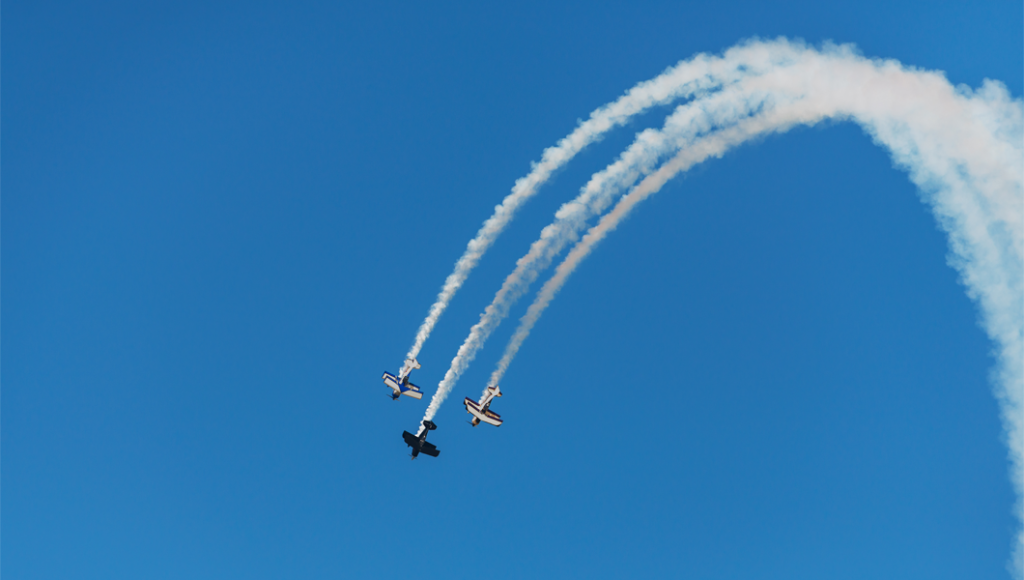
10. Or… choose a less traditional path!
Of course, you are not restricted to only recreational flying or committing to a commercial pilot career. Feel free to be creative in charting your course. You might find happiness in becoming an aircraft salesman, demonstrating how the plane maneuvers and functions. Why not? And if you are a good aircraft salesman who has mastered this ‘craftsmanship,’ you can secure impressive earnings as the commission on aircraft sales is high!
Another idea is engaging in charity events, collaborating with non-profit organizations, local communities, or participating in search and rescue missions. These endeavors frequently rely on the expertise of pilots with a private license who are willing to contribute their skills and time for the greater good. It’s a meaningful way to apply your passion for flying while making a difference in the lives of others!
To wrap up
Getting your private pilot certification is truly a ticket to a world of adventures. Whether you’re a recent graduate dreaming of the skies, a business pro seeking a new thrill, or just someone feeling a bit out of place, the Private Pilot License journey might be the perfect match. You can fly your favorite small planes, take friends and family, or share the joy with fellow aviation enthusiasts. A possibility of building a long-term career adds an extra layer of excitement. Remember, the sky’s not the limit; it’s just the beginning for those who love flying!




